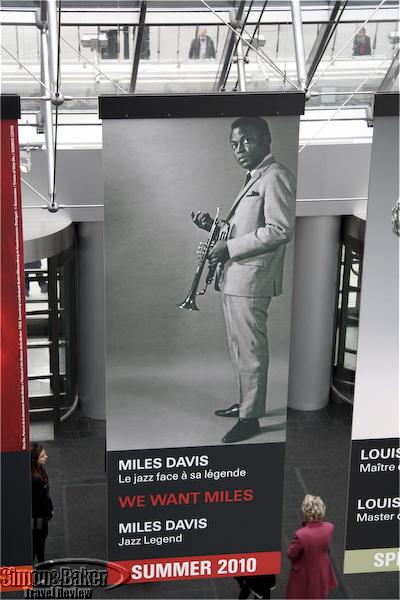
The museum is centrally located downtown, just a few blocks out of the underground city and near some very posh shopping. There are two main buildings: one modern and the other in the classical Beaux Arts Style. The two buildings are linked by an underground tunnel that also is an exhibition space for sculptures and ceramics. We enjoyed that the works of art are organized thematically, allowing us to pick and choose which period we wanted to visit first. I particularly enjoyed the Canadian Art collection showcasing 17 th century to modern day Canadian artists such as Jean-Paul Riopelle and Paul-Emile Borduas.
The Decorative Arts and Design collection located in an adjoining pavilion caught our attention. It was entertaining to see the evolution of furniture and various utilitarian objects assembled in chronological order. We found the map of the floor plan particularly useful. The staff were also polite and helpful and even the security guards were able to give us information on the collection. We quite enjoyed strolling through the collections although the next time we visit, we will first look up the website for the tour hours.
Handicapped Access Yes
How To Get There There was no indoor parking. There was metered street parking in the area as well as several parking lots. The Museum easily accessible by public transit: 24 bus line or the Metro Guy-Concordia.
Location Downtown Montreal in the historic Golden Square Mile. We took the metro to Guy-Concordia and walked three blocks north to Sherbrooke Street.
Size Of Museum There were three pavilions with a fourth pavilion scheduled to open in 2011 and a collection of 35,000 art objects.
Type Of Museum The vocation of the MMFA is to promote the work of Canadian and international artists past and present. The MMFA has built up a collection of over 35,000 paintings, sculptures, works on paper, prints, drawings, photographs and decorative art objects from antiquity to today. These collections are divided into Ancient Cultures, European Art, Canadian Art, Inuit and Amerindian Art, Contemporary Art and Decorative Arts and Design.
Canadian art from the past to the present is well represented in the museum. The Inuit sculptures and the paintings by the Group of Seven are my favourites. One section that gets a little lost is the Decorative Arts and Design section in the Liliane and David M. Stewart Pavilion, an interesting collection of furniture and objects dating from the first colonials to modern day. This is annexed to the back of the Beaux Arts building and is worth the extra time to find. I found a group of design students sketching on my last visit.
Recommendations Although the exhibition spaces are well laid out, it can get quite confusing to navigate around them. To explore the various pavilions, I find it useful to rely on a map of the floor plans. They are linked by an underground tunnel making it possible to remain within the complex.
Reviewers Article by Andrea de Gosztonyi-McRae
Photos by Andrea de Gosztonyi-McRae
Would You Go Again Yes
Contact Information
- Musée des Beaux Arts de
- Montréal ( MBAM)
- Jean-Noël Desmarais Pavilion
- 1380 Sherbrooke Street West
- Montreal, Canada
- +1 514-285-2000
- 1-800-899-MUSE


